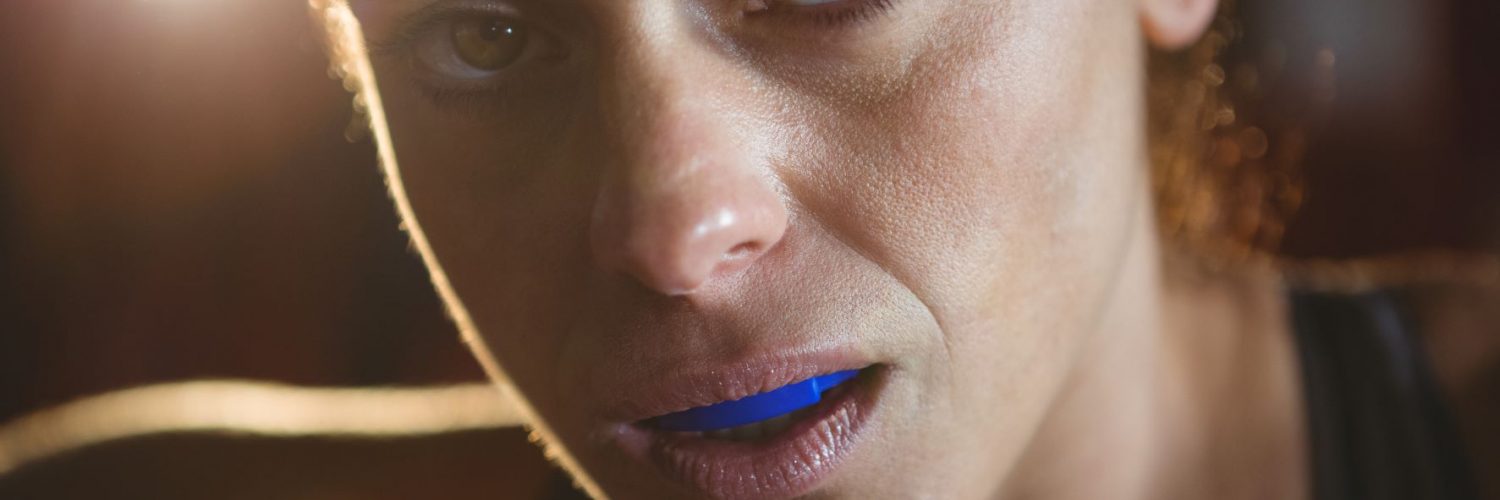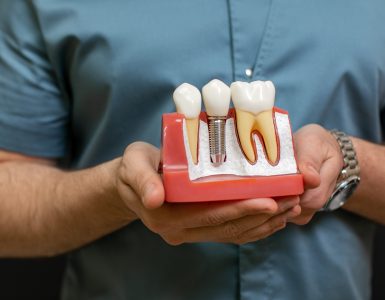Most Aussies lead an active lifestyle whether through playing sport or leisure and recreation activities. These kinds of activities are the most common cause of dental injuries, which can often be serious, difficult to treat and expensive. It is important to consider how to protect yourself when partaking in activities that could cause harm to your teeth, gums, lips, tongue and jaw.
Why you should wear a mouth guard
It is likely obvious that high-impact contact sports such as rugby union, rugby league, AFL, hockey, boxing and martial arts can lead to dental injuries, but even non-contact sports such as basketball, cricket, netball, touch football and soccer carry a risk of an accidental injury. In fact, approximately 44% of dental injuries are sustained through accidents when cycling, skateboarding and scooter riding. Wearing a mouthguard can help protect your teeth, lips and jaw preventing dental injuries and, not only that, studies have shown they help to prevent concussions as well. Some people are at higher risk of injury, for example, if they are undergoing orthodontic treatment such as wearing braces, have protruding front teeth or have inadequate lip coverage over their front teeth. It is better to prevent oral injuries with a mouthguard than go through the possible pain, trauma, expense and potential long-term impact of dental restoration.
How a mouthguard works
A mouthguard is made from soft plastic and can be custom-fitted to your mouth. It works by absorbing and spreading the impact of any damaging blow. It provides a protective barrier between your teeth and the point of impact.
Types of mouthguards
There are three types of mouth guards you can choose from:
- Stock mouthguards. This ready-to-wear mouthguard comes preformed and is available in adults and children’s sizes and only covers your top teeth. They are usually available in sporting goods stores and are the cheapest option. Because they are generic you may find that they do not fit the mouth perfectly, can be bulky and uncomfortable and can make breathing difficult. Stock mouthguards provide the least protection.
- Boil-and-bite mouthguards. These mouthguards are a better option that the stock mouthguards. You soften it in boiling water and then place it over your front teeth and bite down. This should mould to the shape of your mouth give a more accurate fit. It is important to follower the instructions carefully.
- Custom-fitted mouthguards. You will need to visit your dentist to get a custom-fitted mouthguard. A mould will be taken of your teeth which is used to create a mouthguard designed specifically designed to fit the shape of your mouth and teeth. Because they have a close fit and are comfortable their cushioning effect will provide the best protection. If you wear braces, your dentist will be able to custom-fit a mouthguard that will protect your braces from damage.
Which mouthguard should you choose?
It is important that your mouthguard is appropriately designed to provide maximum protection against dental injuries. It needs to be comfortable, but still tight-fitting and doesn’t interfere with your breathing and swallowing or cause you to gag.
The Australian Dental Association considers that the custom-fitted mouthguards are far superior to the over-the-counter alternatives. They advise against the use of over-the-counter options because of their loose fit, interference with breathing and speaking and the fact that they can wedge in the back of the throat at impact, which could be life threatening.
How to care for your mouthguard
It is important that you take good care of your mouthguard to protect it from damage. It is also important to check it regularly for any holes or signs of damage and get it checked by your dentist at your routine check-up. Get it replaced if it is damaged or you find it is not fitting as well. To help keep it clean and lasting as long as possible:
- Make sure you brush and floss your teeth before you use it.
- Wash it with toothpaste and water, or rinse with mouthwash before and after you use it
- Rinse it with cold water only, never hot water
- Store it in a container with ventilation to protect it and to allow it to dry between uses
- Keep it out of the sun
- Make sure it is out of reach of any pets, even in its container.




